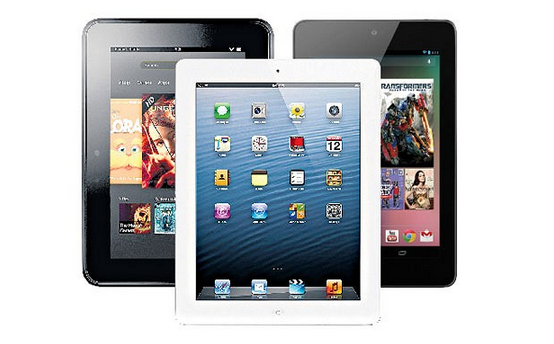Tablet computers are more popular than ever. Whether they’re running iOS, Android or one of the less common operating systems, they are effective tools for viewing media, running presentations and accessing maps, e-mail and social media. However, most people are not taking advantage of the full potential of their tablet computers. A tablet does not need to be limited to reading e-books and playing Angry Birds.
1. Take Full Advantage of the Touchscreen
One of the advantages that a laptop or desktop computer has over a tablet is the ease of input, particularly the keyboard and mouse that we’re all well acquainted with and are able to use efficiently. A tablet is equipped with a touchscreen instead. The touchscreen keyboard is considerably slower and less precise than a standard keyboard. You may feel that the awkwardness of input makes your tablet a poor choice for getting work done, but have you fully explored the stylus and the dictation software? Give the handwriting and voice recognition on the tablet a fair trial, if you haven’t done so already. You may be surprised at how productive you can be.
2. Familiarise Yourself with the Camera and Video
Your tablet most likely has a built in camera and built in video. You may not have given this much thought, since it’s hardly convenient to wave a tablet around, taking pictures or filming. However, have you considered using it as a live communications tool? From making and receiving Skype or FaceTime calls to recording meetings to creating content for blogs or social media, tablets have a great deal of potential that often goes untapped.
3. Use the Cloud to its Full Advantage
It’s fair to say that your tablet is probably not your principal computing device. Most professionals still have a laptop or desktop machine serving as home base. That doesn’t mean that the tablet can’t be used to work on current projects. Keep your active files stored in the cloud, use imap mail boxes and use cloud-based calendars, contacts and organisational programs. You’ll have access to all of your most important data while you’re on the go, and you won’t need to worry about synching devices. Read this post for more information. You don’t have to take your laptop everywhere in order to be productive. Sometimes, the tablet is all that’s needed.
4. Learn to Stretch the Battery
Since tablets are by nature mobile devices, battery life is an important consideration. Avoid leaving your tablet plugged in for long periods of time with a full battery, especially while in use. That will help to maintain your battery’s capacity. Be sure to turn off your wi-fi when your device is inactive. That cuts down significantly on battery use by preventing the device from constantly searching for networks.
5. Get the Right Broadband Plan
In order to keep your cloud-based data refreshed and your communications flowing smoothly, you’ll need a fast, dependable broadband connection for your tablet. Look for a plan that’s optimised for mobile devices, with high throughput and a fast connection. Make sure your plan matches your tablet’s broadband technology: 3G or 4G. For the best value, make sure that your mobile computing plan covers both your smartphone and your tablet. For more information on broadband options please visit – http://sales.talktalk.co.uk/product/broadband/essentials

